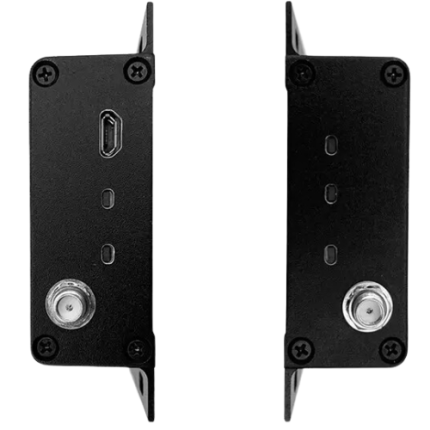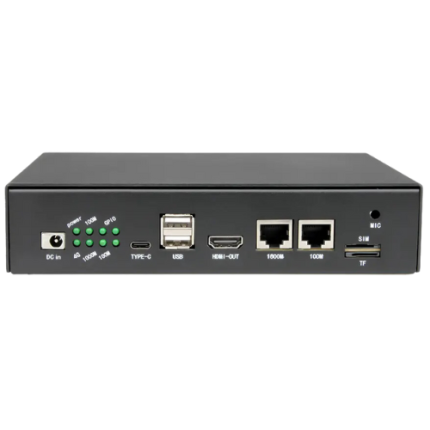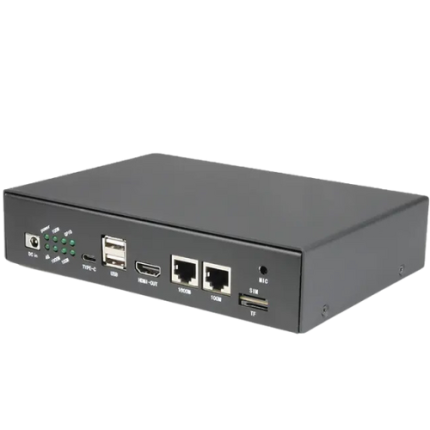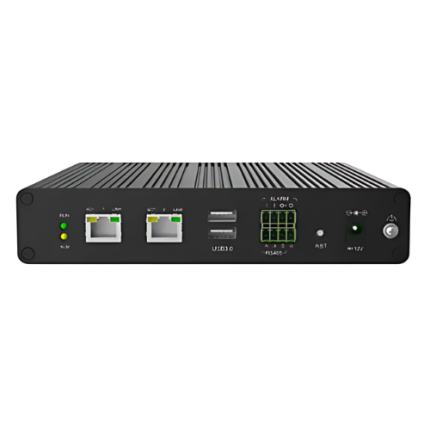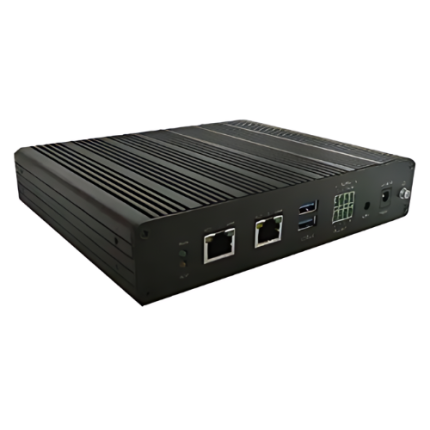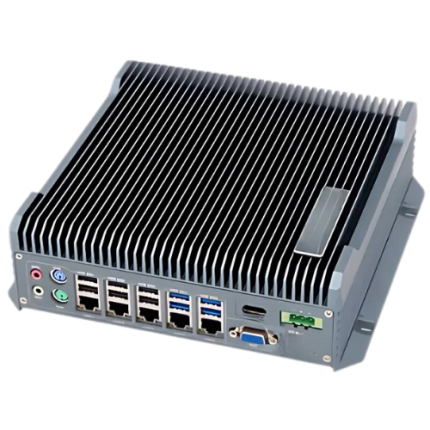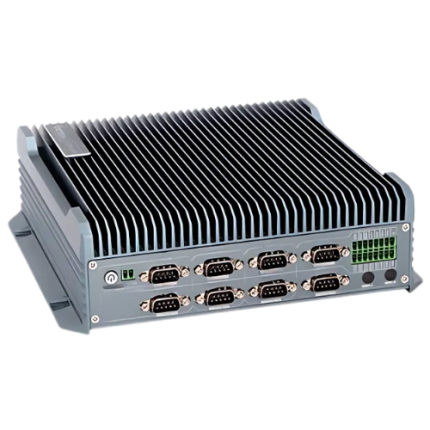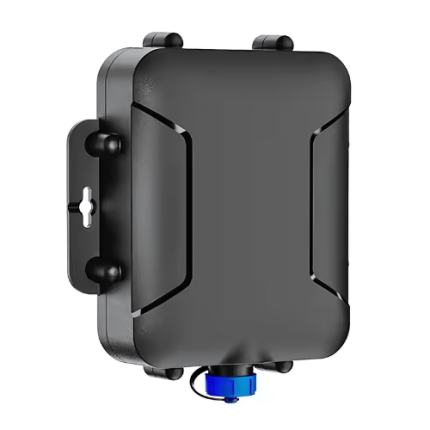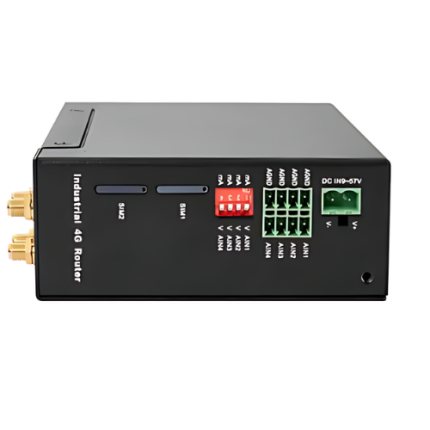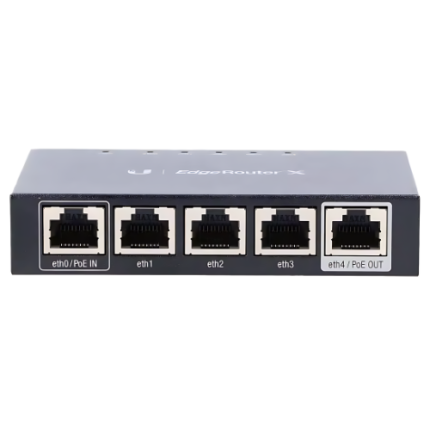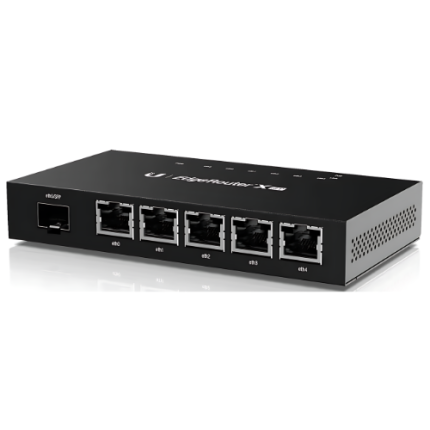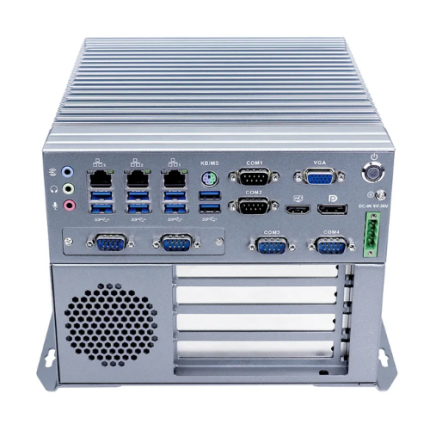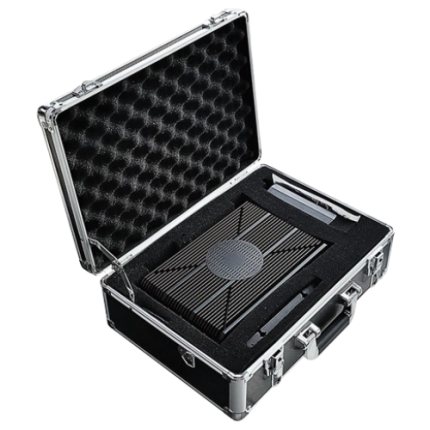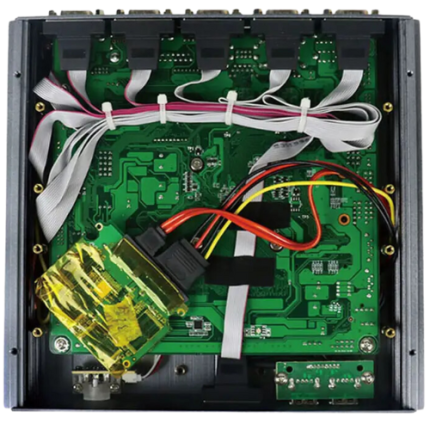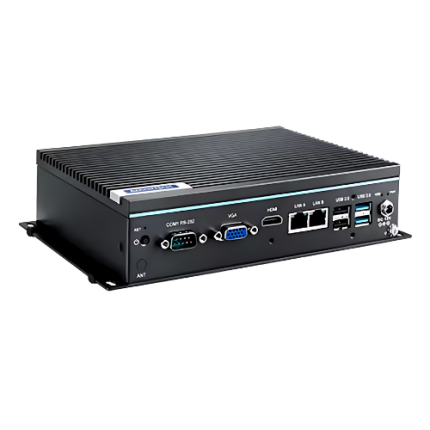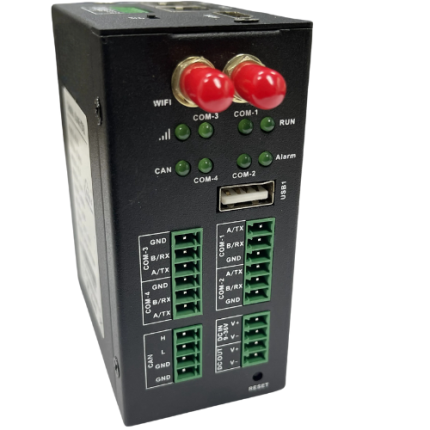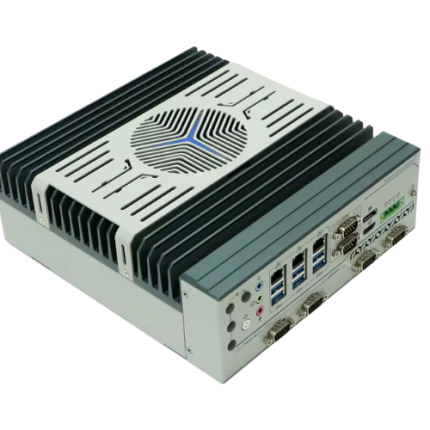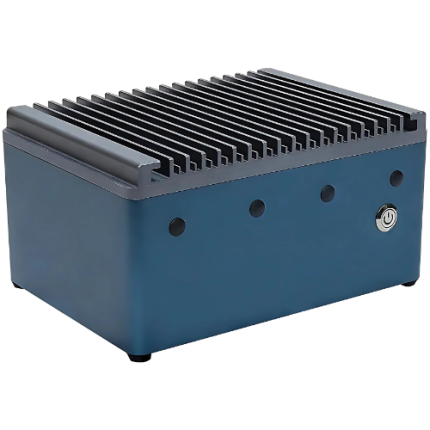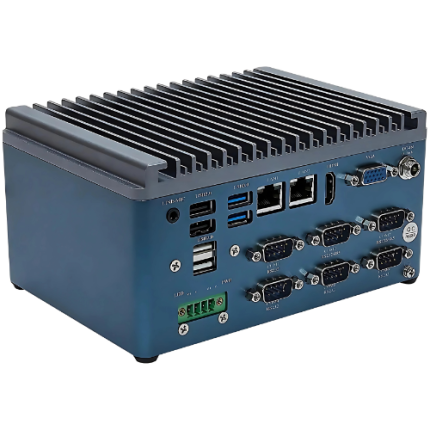GAO’s Device Edge refers to the computational and data processing capabilities located at the periphery of a network, close to the source of data generation. It integrates advanced technologies directly into end-user devices or localized infrastructure, thereby reducing latency and enhancing real-time data handling. By executing tasks locally, Device Edge minimizes the need for data to travel back and forth to centralized cloud servers, which can significantly improve response times and bandwidth efficiency. This approach is particularly valuable in scenarios requiring swift decision-making and processing, such as in IoT applications, autonomous systems, and smart environments. Implementing Device Edge optimizes system performance and provides enhanced reliability and security by mitigating potential data transmission vulnerabilities.
The Device Edge may also be called: Edge Network, Fog Computing, Edge Analytics, Mobile Edge Computing (MEC), Cloudlet, Distributed Computing, Local Processing, Edge Cloud, Perimeter Computing and Proximal Computing.
Accept Edge Series Wireless Wifi Ble Ibeacon Gateway – GAOTek
AI Edge Computing Gateway Video Behaviours Analysis – GAOTek
AI Edge Device with 32 Channels, Face Libraries & Security – GAOTek
AI Edge Station with Advanced Video Encoding or Decoding – GOATek
Android Industrial Fanless Mini Pc with16GB Storage – GAOTek
Automatic Reconnection Edge Gateway IP68 GNSS Device – GAOTek
Cellular IoT Edge Router for Tunnel Remote Monitoring Modbus –GAOTek
Compact Dual Core Edge Router with WiFi & LAN- GAOTek
Compact Gigabit Router with 600Mbps 2.4G Wi-Fi, PoE & Dual-Core CPU-GAOTek
Computer Dual Industrial Embedded PC with 8GB Memory – GAOTek
Computing Box With Android 12.0 – GAOTek
Desktop Embedded Computer with HD Graphics 530 – GAOTek
Developer Kit Carrier Board Computer with 90W Capacity – GAOTek
Dual Core Enterprise Edge Computing Gateways Router Wifi – GAOTek
Dual Embedded Industrial Computer with 128G Storage – GAOTek
Durable Fanless Industrial PC with Intel Celeron – GAOTek
Edge AI Box With Industrial Desktop PC – GAOTek
Edge Computing 4 G WIFI RS485 Smart Gateway Device – GAOTek
Edge Computing Embedded System with Video Support – GAOTek
Edge Computing IOT Gateway Industri Module Android Embedded – GAOTek
Embedded Edge Computing Box PC with Dual 4 K Display – GAOTek
Embedded Industrial Computer with 16GB Memory – GAOTek
Embedded Industrial Computer with 4650U CPU – GAOTek
Embedded IoT Edge Device With Industry Control – GAOTek
GAO’s Device Edge is composed of the following components:
- Edge Device
- Edge Gateway
- Edge Server
- Network Infrastructure
- Edge Middleware
- Security Infrastructure
- Cloud Interface
- Edge Analytic
GAO Tek’s Device Edge has the following functions:
- Data Collection: GAO Tek edge devices are equipped with sensors and interfaces that collect data from their immediate environment. This data can include environmental conditions, machine status, user inputs, and more. The ability to gather data locally is fundamental to the edge computing paradigm.
- Local Data Processing: GAO’s one of the primary functions of Device Edge is processing data locally. This involves filtering, aggregating, and analyzing data near the source. By performing computations on the edge device or gateway, it reduces the amount of data that needs to be transmitted to central servers, thereby minimizing latency and conserving bandwidth.
- Real-time Analytics: We edge computing enables real-time data analytics, which is crucial for applications that require immediate insights and actions. This includes predictive maintenance in industrial settings, real-time traffic management in smart cities, and instant anomaly detection in security systems.
- Data Reduction and Compression: Our before transmitting data to the cloud, edge devices can perform data reduction and compression. This process involves eliminating redundant information and compressing the remaining data to minimize the load on network infrastructure and reduce transmission costs.
- Data Storage: edge devices often include local storage capabilities to retain data temporarily. This local storage is useful for caching data, ensuring data availability during network disruptions, and enabling local historical analysis.
- Security and Privacy Management: GAO Tek edge computing enhances data security and privacy by keeping sensitive data closer to its source and reducing the exposure to potential breaches during transmission. Edge devices can implement encryption, authentication, and access control measures to protect data at rest and in transit.
- Device and Resource Management: GAO’s edge computing involves managing a diverse array of devices and resources. This includes deploying software updates, monitoring device health, and optimizing resource utilization. Efficient device management ensures the reliability and performance of the entire edge network.
- Protocol Translation and Interoperability: We edge devices often need to communicate with different systems and networks that use various communication protocols. Edge gateways can perform protocol translation to ensure interoperability between heterogeneous devices and systems, enabling seamless integration and communication.
- Load Balancing and Traffic Management: Our edge computing can distribute computational loads across multiple edge devices and gateways. This load balancing helps in optimizing resource utilization, avoiding bottlenecks, and ensuring smooth operation even during peak demand periods.
- Autonomous Decision Making: GAO Tek in some applications, edge devices are equipped with machine learning models and algorithms that enable autonomous decision-making. This capability is critical for scenarios such as autonomous vehicles, robotics, and smart infrastructure, where decisions need to be made instantaneously without relying on central servers.
GAO Tek’s Device Edge comply with applicable industry standards such as:
- IEC 62443
- ISO/IEC 27001
- NIST SP 800-53
- OPC UA (IEC 62541)
- IEEE 802.1 Time-Sensitive Networking (TSN)
- 3GPP Standards
- ETSI MEC
- ISA-95
- GDPR
- HIPAA
- PCI DSS
Our Device Edge help our customers comply with relevant U.S. government regulations such as:
- Federal Information Security Management Act (FISMA)
- Health Insurance Portability and Accountability Act (HIPAA)
- Gramm-Leach-Bliley Act (GLBA)
- Sarbanes-Oxley Act (SOX)
- Children's Online Privacy Protection Act (COPPA)
- California Consumer Privacy Act (CCPA)
- Federal Risk and Authorization Management Program (FedRAMP)
- Family Educational Rights and Privacy Act (FERPA)
- Payment Card Industry Data Security Standard (PCI DSS)
- Cybersecurity Information Sharing Act (CISA)
Our Device Edge help our clients in comply with relevant Canadian government regulations such as:
- Personal Information Protection and Electronic Documents Act (PIPEDA)
- Privacy Act
- Personal Health Information Protection Act (PHIPA)
- Digital Privacy Act
- Canadian Anti-Spam Legislation (CASL)
- Freedom of Information and Protection of Privacy Act (FIPPA)
- Provincial Privacy Laws (e.g., Alberta’s Personal Information Protection Act - PIPA)
- Payment Card Industry Data Security Standard (PCI DSS)
- Canada’s Cyber Security Strategy
- National Standard of Canada for Privacy Protection (CAN/CSA-Q830)
Our Device Edge has the following applications:
- Industrial IoT (IIoT): GAO Tek in industrial settings, edge computing is used to monitor and control machinery, optimize production processes, and predict maintenance needs. Real-time data from sensors on factory equipment can be processed at the edge to detect anomalies and prevent breakdowns.
- Smart Cities: GAO’s edge computing supports smart city infrastructure by processing data from sensors and cameras locally to manage traffic, monitor environmental conditions, and enhance public safety. Traffic cameras and sensors can process data on-site to optimize traffic flow and reduce congestion in real-time.
- Healthcare: We healthcare, edge computing enables real-time patient monitoring, supports telemedicine, and improves medical imaging processing. Wearable devices can monitor patient vitals continuously and alert healthcare providers immediately if anomalies are detected, enabling quicker interventions.
- Autonomous Vehicles: Our autonomous vehicles rely on edge computing to process vast amounts of data from cameras, radar, and other sensors in real-time to make driving decisions. Edge computing allows autonomous cars to quickly process and respond to environmental data, ensuring safe navigation and collision avoidance.
- Retail: GAO Tek retail, edge computing is used to enhance customer experiences, manage inventory in real-time, and optimize supply chain operations, Smart shelves equipped with edge devices can track inventory levels and automatically trigger restocking when items are low.
- Telecommunications: We edge computing in telecommunications improves network performance by processing data closer to users, reducing latency, and enabling new services. Mobile edge computing can support augmented reality (AR) and virtual reality (VR) applications by reducing latency and improving user experience.
- Energy Management: Our edge computing helps manage energy resources by monitoring and controlling energy consumption and generation at local levels. Smart grids use edge computing to balance load and supply, optimize energy distribution, and integrate renewable energy sources efficiently.
- Agriculture: GAO Tek in agriculture, edge computing enables precision farming by processing data from field sensors and drones to monitor crop health, soil conditions, and weather patterns. Edge devices in fields can analyze soil moisture levels and provide real-time irrigation recommendations to optimize water usage.
- Smart Homes: GAO’s Edge computing enhances smart home systems by processing data locally to control lighting, heating, security, and appliances more efficiently. A smart thermostat uses edge computing to learn user preferences and adjust temperature settings in real-time, improving energy efficiency and comfort.
Below are our resource pages containing useful information on Device Edge:
FAQs on Device Edge on GAOTek.com
How to Choose a Device Edge
Components of Device Edge
Operation, Maintenance & Calibration of Device Edge
Customers in the U.S and Canada of Device Edge
Applications of Device Edge in Telecommunications
Our Device Edge is in stock and can be shipped overnight within the continental U.S. and Canada from a nearby warehouse in the U.S. or Canada, and can also be shipped globally.
We provide 24/7 support. If you have any questions, our technical experts can help you. Please fill out this form or email us.


